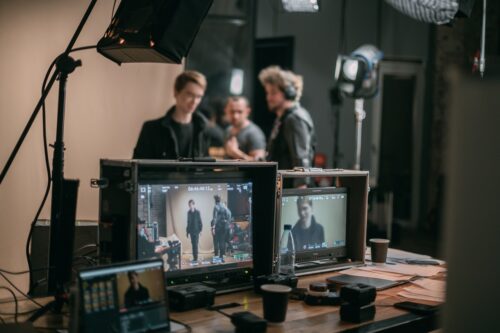The audio and video debate is crucial to the future of digital storytelling. In this episode of AV123, brought to you by Voice123, Jordan Peterson, a founder and podcast producer at Voltage, shares his thoughts on the future of audio video content and the power of visual storytelling!
Listen to the full episode here:
What is audio storytelling?
Audio storytelling can forge a deep, personal connection with audiences. As Jordan explains, “There’s an intimacy involved where the communication becomes more authentic,” highlighting how audio feels personal and genuine. Audio-only formats like audio drama podcasts tap into the listener’s imagination, making the story more personal and engaging. “You create pictures with audio, as opposed to dictating to your viewer what they are looking at.” This freedom allows audio to become a canvas for the listener’s creativity.
Audio also enables multitasking—whether listeners jog, commute, or do laundry. It also provides an inclusive experience for those with visual impairments. Jordan shared that audio is often consumed when people’s hands are busy, but their minds are free. “I do most of my listening on my morning jog or when I’m doing chores,” he said.
What is visual storytelling?
Visual storytelling offers specific advantages for marketers and creators because video platforms like YouTube form a unique ecosystem for video creators. “All of the roads have been built for video. The infrastructure is there for sharing, advertising, and distribution,” Jordan explained.
Video podcasts have also gained popularity because they offer visual context. Facial expressions, body language, and visual aids enrich the storytelling experience, catering to viewers who prefer visual learning. This highlights the difficulties of promoting audio-only content in a world dominated by content platforms designed for visuals. “If you don’t record video, these things will not perform on social media,” Jordan admitted.
Cost and efficiency in audio and video content
Creating high-quality audio content is often more cost-efficient and accessible than producing visuals. Jordan says, “Highly produced audio content can sound professional with fewer resources.” This makes audio a more viable option for small creators and niche projects. Video production, on the other hand, requires special equipment, video editing software, and post-production resources. As Jordan noted, the line between a video podcast and a complete video show often blurs, which can increase production costs.
The role of audio and video in storytelling
Audio and video play distinct roles in visual storytelling. Audio allows creators to craft an experience that is deeply personal and imaginative. “It frees people up to do other things… while forming a closer relationship with the content,” he explained. Video provides an opportunity to blend audiovisual elements to create a rich storytelling experience. From cinematic visual effects to expressive interviews, video enhances the narrative by adding layers of depth.
What is the future of audio and video storytelling?

Jordan suggests leveraging visuals for promotional content while using audio as the primary medium for storytelling. “You can get as many advantages of the audiovisual ecosystem as you can without losing the advantages of the audio ecosystem,” he said. This strategy allows creators to tap into each platforms’ reach while preserving the intimacy and accessibility of audio. Jordan also expressed hope for future innovations in audio-only platforms, which could level the playing field and shape the future of AV storytelling.
Final Thoughts
The choice between audio and ultimately depends on your audience and storytelling goals. While video dominates the audiovisual scene, audio is accessible and cost-efficient. As Jordan summarized, “Audio is the most important format for the show… It’s almost sacred.”
If you need a talented voice actor to bring your audio to life, visit Voice123 to hire professional voice actors, or use Voice123 Enterprise for complete project management!
And don’t forget to subscribe to AV123 on your favorite podcast platform for the latest AV insights!
FAQs
Audio elements like music, dialogue, sound effects, and visual aspects like images, motion, and graphics are multimedia experiences that combine to tell stories that engage audiences.
Mixing audio and video involves synchronizing sound elements with visual footage using video editing software like Adobe Premiere Pro to ensure the audio complements the visuals.
Integrating audio and video requires importing both elements into editing software, syncing them accurately, and adjusting levels to create an immersive experience.
Audio editing focuses on manipulating soundtracks, including adjusting volume, removing noise, and adding effects, while video editing involves cutting, arranging, and enhancing visual footage.














